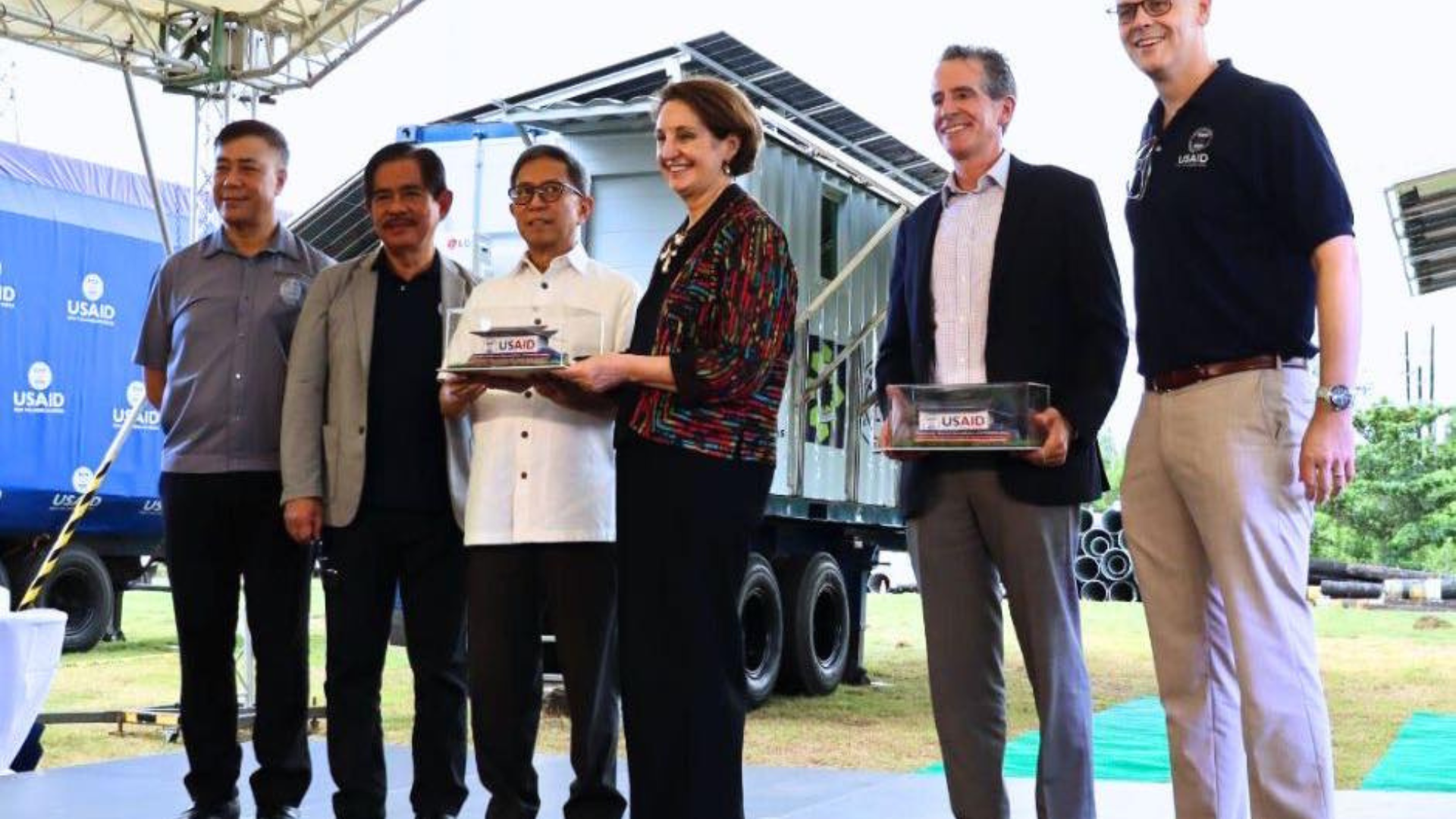DOE, USAID Deploy Mobile Solar Units to Power Palawan’s Off-Grid Communities
- May 16, 2025
- 0

The Department of Energy (DOE) and the United States Agency for International Development (USAID) officially handed over three Mobile Energy Systems (MES) to the National Power Corporation – Small Power Utilities Group (NPC-SPUG) on 16 May 2025.
The handover ceremony, held at the NPC Substation in Puerto Princesa, marked a pivotal moment in the government’s strategy to deliver decentralized, renewable power to off-grid and disaster-prone communities. Energy Secretary Raphael Lotilla and U.S. Ambassador MaryKay L. Carlson led the event, joined by NPC President and CEO Fernando Martin Roxas and other officials from DOE and USAID.
The MES units—solar-powered platforms with battery storage—are set to be deployed in remote parts of Palawan, providing emergency energy supply to areas not connected to the national grid. These systems are designed to ensure uninterrupted electricity for critical infrastructure such as hospitals and communications during disasters.
“These MES units represent not just a technological innovation, but a shared vision for energy security and resilience,” Secretary Lotilla stated.
Citing their economic impact, Lotilla noted that a 70-kWh MES can deliver annual fuel savings of nearly PHP 480,000 with a return on investment between 8.88 to 11.16 years. A 50-kWh MES is projected to save over PHP 389,000 annually, with ROI ranging from 11.5 to 14.5 years. These figures do not yet account for broader benefits like lower transmission losses or reduced exposure to fuel price volatility.
“Every peso saved from imported fuel is a peso reinvested into our communities. Every kilowatt-hour generated locally strengthens our energy independence,” Lotilla emphasized.
The initiative also reflects the DOE’s strategic push to reduce dependence on imported fuels by harnessing indigenous, renewable energy. The MES rollout aligns with the broader goals of the Energy Sector Emergency Operations Center (ESEOC), launched in 2024, to bolster the country’s energy response capabilities.
Palawan, often called the “last frontier,” is among the most vulnerable to power outages due to its isolation from the national grid. The MES units are expected to significantly reduce service disruptions in the province’s remote communities.
In addition to the three MES units deployed in Palawan, two units are already operational in Cagayan Province, while one is stationed at the DOE compound in Taguig City. Four more units are scheduled for turnover next month.
“This is a product of what we can achieve when we bring together innovation, collaboration, and a shared vision for a sustainable future,” said Lotilla. “Let today’s ceremony serve not just as a turnover, but as a renewal of our collective commitment.”
The DOE, USAID, and NPC reaffirmed their shared commitment to a low-carbon, energy-secure future through this initiative—one that strengthens community resilience, supports energy equity, and underscores the critical role of clean energy technology in disaster-prone regions.
What do you think about the MES initiative and its potential for nationwide deployment? Share your thoughts with us—join the discussion.
Follow Power Philippines on Facebook and LinkedIn or join our Viber community to stay up to date on the latest energy news.